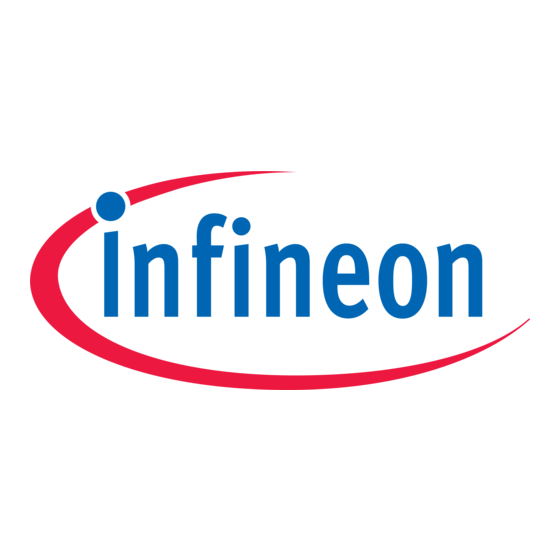
Advertisement
Quick Links
Advertisement

Summary of Contents for Infineon IM69D130
- Page 1 IM69D130 Microphone Shield2Go Quick Start V1.0.1...
- Page 2 Introduction The IM69D130 MEMS microphone is designed for applications where low self-noise (high SNR), wide dynamic range, low distortions and a high acoustic overload point is required. Infineon's Dual Backplate MEMS technology is based on a miniaturized symmetrical microphone design, similar as utilized in studio condenser microphones, and results in high linearity of the output signal within a dynamic range of 105 dB.
- Page 3 (if microphone parts are broken off) Pin out on top and bottom is directly connected to • the pins of the IM69D130 with channel select L/R if broken off If microphone parts are broken off, all pins of the •...
- Page 4 Evaluation Board PCB Details 2018-07-17 Copyright © Infineon Technologies AG 2018. All rights reserved.
-
Page 5: Evaluation Board Schematic
Evaluation Board Schematic 2018-07-17 Copyright © Infineon Technologies AG 2018. All rights reserved. - Page 6 Extended information about the Arduino environment. Click here • How to import libraries? Click here • How to install additional boards? Click here • Problems related to Arduino? Click here for troubleshooting • 2018-07-17 Copyright © Infineon Technologies AG 2018. All rights reserved.
- Page 7 Navigate to File – Open • Open one of the .ino files of • the downloaded examples Additional notes for • installation can be found in the GitHub repository in the README.md https://github.com/Infineon/IM69D130-Microphone-Shield2Go/ 2018-07-17 Copyright © Infineon Technologies AG 2018. All rights reserved.
- Page 8 Arduino examples for the IM69D130 can be directly used Steps Open one of the examples for the IM69D130 from File – Open and • select as board XMC1100 XMC2Go Connect the stacked boards to the PC and press the Upload button •...
-
Page 9: Not Possible
3.3 V pin as the interface lines, e.g. CLK/DATA, will still be driven by 5 V Arduino UNO does not support I2S • Please use appropriate level shifting for • these boards possible 2018-07-17 Copyright © Infineon Technologies AG 2018. All rights reserved.
Need help?
Do you have a question about the IM69D130 and is the answer not in the manual?
Questions and answers